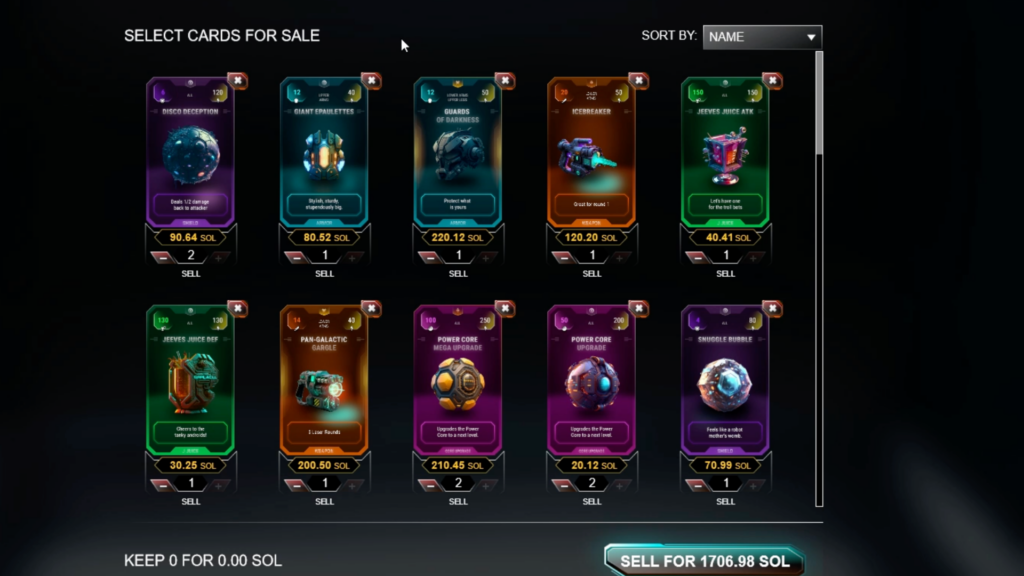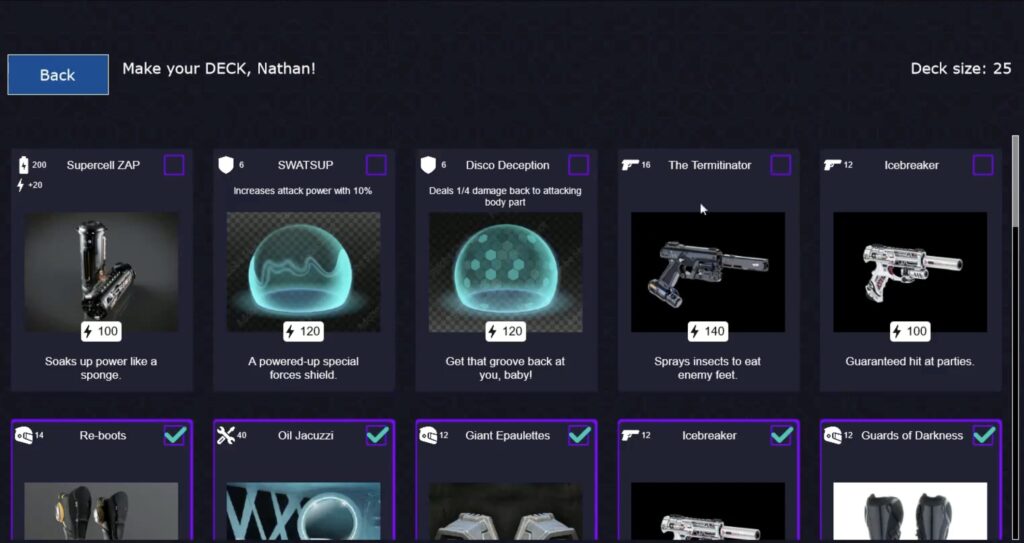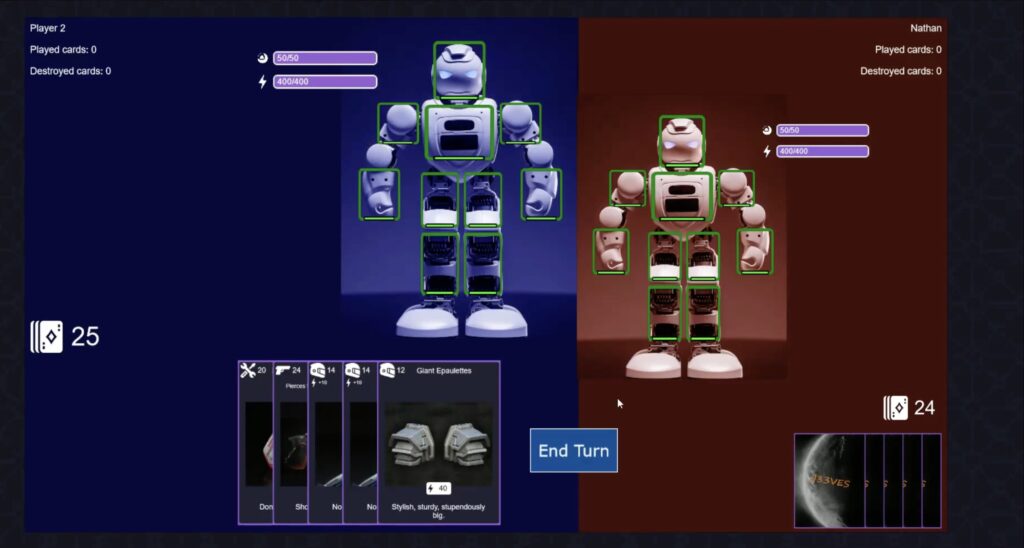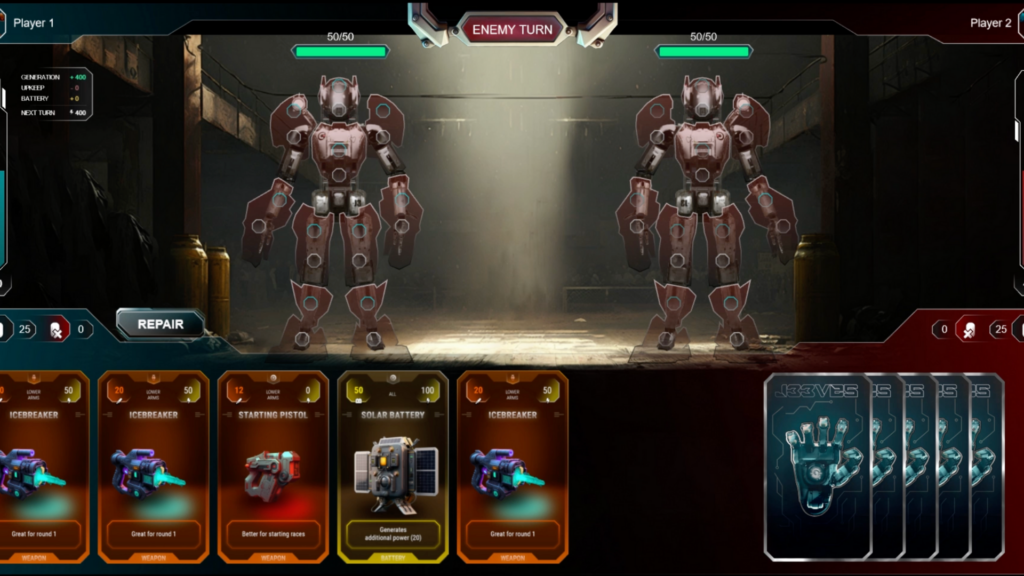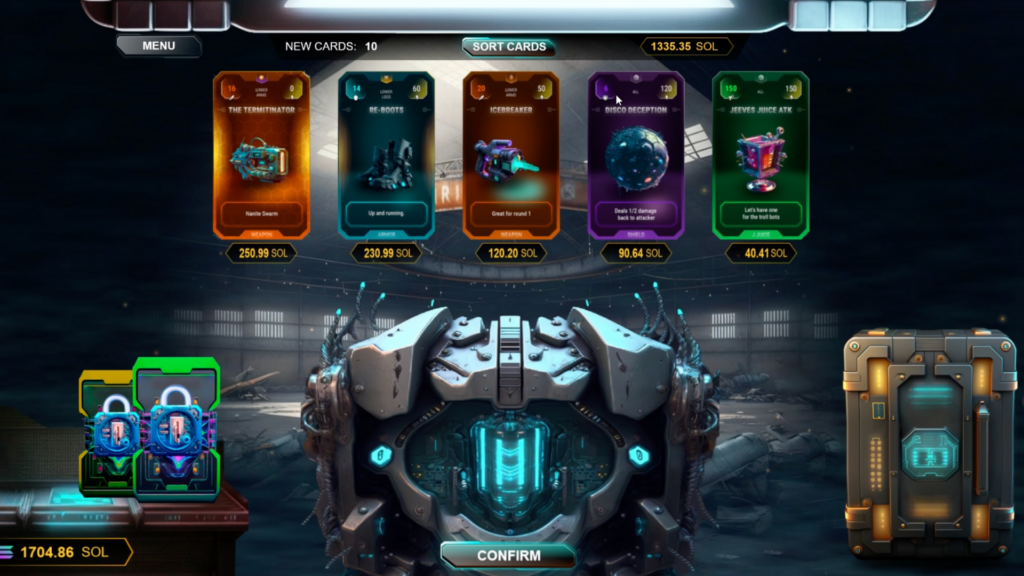If you asked us earlier this year which prototype we were working on, chances were we’d reply: “Oh, One of Many”. Funnily enough, we wouldn’t have been dodging the question because that is actually the name of this project. One of Many: a digital trading card game involving robots, tactical gameplay, and the blockchain.
Get an overview of the two iterations of the One of Many prototype in this video.
One of Many – working title: Jeeves Battle Bots – sprung from the mind of Lloyd Hughes, founder of Ownit Games. In the prototype, players use cards to influence specific aspects of their robot. Letting it consume a specific potion, for example, can influence its ability to attack, while applying armor will boost its defensive rating.
Lloyd got the idea from Jeeves, a popular Discord chatbot used in gaming related contexts. Jeeves – originally conceived as a chatbot for World of Warcraft servers – was implemented on a Discord server for an NFT-based game which Lloyd was following. Through interactions with this bot, he formed a concept of his own NFT-based Trading Card Game. Wanting to test this concept, he approached PreviewLabs to develop a prototype.
The Concept
One of Many is a deck builder video game in which the player controls a battle robot that battles the bots of other players. Through cards containing buffs, items, and attributes, the player can install upgrades for their battle bot. Rather than adding cards to a playing field, they equip these cards to various slots corresponding to their robot’s limbs and other parts.
By buying booster packs, players can unlock more cards to include in their deck. This is the part is where the optional blockchain integration comes in, as players would be asked whether they the cards to be ‘minted’ (created) and added as NFTs in their crypto wallet.
A Tale of Two Iterations
Ownit Games approached us initially to see if their idea would be feasible as a playable game. They needed a prototype that gave them a good idea of how the concept would work in practice. Since the first iteration of this prototype held a lot of potential, they wanted a more updated version that could be used to pitch the game to investors.
Iteration 1: Creating a Digital Playground
In the first iteration, we created a functional prototype that allowed the team at Ownit Games to experience the gameplay. We achieved this by creating a digital playground in which the client could try out various mechanics, get a sense of balance, and shape a core set of cards.
We developed the prototype using Babylon.js, since Ownit wanted to release their game for internet browsers. We created a back-end system that allows them to edit cards and robot properties. This helps them ensure adaptability and freshness in the gameplay.
As it goes with prototypes, the presentation of the game was more simple in the first iteration than in the second one. This allowed the client to see the potential of his idea earlier on and play around with a functioning version.
Iteration 2: Turning the Prototype Into a Looker
With a confirmation that their concept held potential, Ownit Games decided to look for funding. To attract investors, they would need a prototype that is a lot more visually appealing than the first iteration.
Through clever use of generative AI tool Midjourney, we spruced up the looks of the game and were able to add eye-catching graphics. We also iterated on some of the mechanics of the game. As a final pillar in this iteration, we elaborated the sequence for opening booster packs, which will be a key element in the game since its cards can be linked to the blockchain.
Testing Ideas And Convincing Investors
The One of Many prototype is now ready to be used to convince investors of the game’s potential. It was great to work on a project that has challenged us to transform a functional prototype into a visually appealing product to pitch to investors.
Do you have a game concept you’d like to test, just like Ownit Games? Get in touch with us and see how we can turn your ideas into tangible prototypes.

